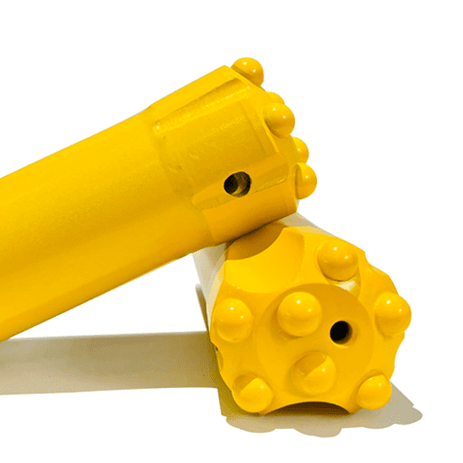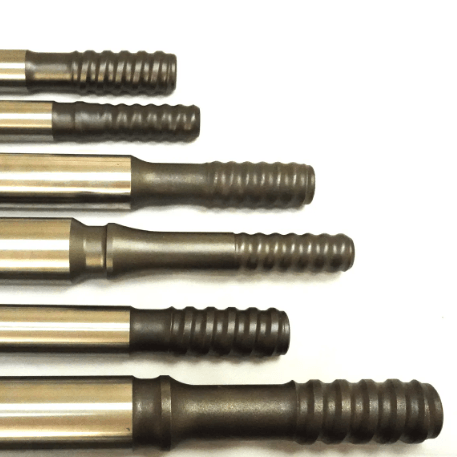Are you getting ready for a home improvement project, or perhaps working on a construction site? Understanding the drill bit size needed for your anchors is a fundamental skill. This comprehensive guide will walk you through everything you need to know about selecting the right drill bit size, whether you're working with drywall, concrete anchors, or any other type of wall anchor. It is worth reading because selecting the wrong drill bit can lead to frustrating rework, compromised structural integrity, or even project failure. This guide provides you with the knowledge to choose the correct drill bit size every time.

1. Understanding the Importance of the Correct Drill Bit Size: Why is it so important?
Choosing the correct drill bit size is not just a technicality; it’s the foundation for a successful anchor installation. The drill and the drill bit are essential for a secure and long-lasting result.
Using a drill bit that is too small will make it difficult to drill a hole and can damage the anchor. Conversely, if the drill bit is too large, the anchor may not grip the material properly, rendering it ineffective. The size of the hole directly affects the anchor's ability to hold weight and resist forces. If the hole size is incorrect, your anchor won't work, which can compromise the safety and durability of your project. So, when using concrete anchors, make sure you drill the hole right.
Here's a breakdown:
- Too Small: Makes the anchor hard to insert or damages it.
- Too Large: Anchor won't grip, leading to failure.
- Just Right: Creates a snug fit for maximum hold.

2. What is an Anchor? Types of Anchors and Their Uses.
An anchor is a fastener designed to secure an object to a substrate, like a wall, drywall, or concrete. They are designed to distribute the load and provide a secure hold. Knowing your anchor type is the first step in determining the correct drill bit size. Anchors are essential for hanging shelves, mounting TVs, securing equipment, and much more.
Here are some common types:
- Expansion Anchors: Expand within the hole as you tighten them. These are often used with concrete anchors.
- Plastic Anchors: Ideal for drywall and softer materials, expanding to grip.
- Wedge Anchors: Used for heavy-duty applications, especially in concrete.
- Toggle Bolts: Designed to be used in hollow walls like drywall.
Each anchor type requires a specific drill bit size to ensure a secure fit. The anchor depends on the material and load requirements.
3. Determining the Correct Hole Size: Step-by-step guide.
Before you can drill, you need to determine the size of the hole you need. This involves a few crucial steps:
- Identify the Anchor Type: Know which anchor you're using.
- Check the Packaging: The anchor's packaging will usually specify the drill bit size needed.
- Measure the Anchor: If the packaging is unavailable, measure the anchor diameter. The diameter of the anchor is often the same as the recommended drill bit diameter.
- Consider Material: Different materials require different considerations. For example, concrete anchors require a hammer drill.
If you're working with a wedge anchor, you will need to find out the diameter of the wedge anchor. The packaging should tell you the size drill bit to use. For concrete anchors, you may need a hammer drill.
4. Selecting the Correct Drill Bit: Types and Materials.
Choosing the right drill bit is as important as the size of the hole. Different materials require different types of drill bits.
- Twist Drill Bits: These are the most common type, suitable for wood, plastic, and metal.
- Masonry Drill Bits: Designed for concrete and masonry, featuring a carbide tip for durability. If you are working with concrete anchors, make sure you use a masonry drill bit.
- Spade Bits: Best for drilling large holes in wood.
- Hole Saws: Used to cut larger, circular holes.
The drill bit is essential for making the hole. Always choose a drill bit made from high-quality materials to ensure durability and accuracy. Using a carbide-tipped drill bit is essential when working with concrete.
5. Drill Bit Size for Different Anchor Types: Concrete, Drywall, and More.
Each anchor type requires a specific drill bit size. Here’s a quick guide:
- Concrete Anchors: Typically require a masonry drill bit with a diameter that matches the anchor. The hole for a wedge anchor must be the right size.
- Drywall Anchors: Often use a pre-drilled pilot hole with a standard drill bit, or the anchor itself is designed to self-drill. Using the appropriate drill bit size for drywall is essential.
- Plastic Anchors: These often come with the right size drill bit needed.
6. Drill Bit Size for Wall Anchors: Plastic, Metal, and Expansion Anchors.
Wall anchor selection often depends on the type of wall. The right drill bit will help you make the right size opening.
- Plastic Anchors: Often come with the recommended drill bit or have the size as the anchor printed on them.
- Metal Anchors: Check the packaging for the recommended drill bit diameter.
- Expansion Anchors: The drill bit size is critical for these; a bit of the same diameter or slightly smaller is usually recommended. For wedge anchor installations, know the minimum embedment for a wedge.
For expansion anchors, ensure you use the right size drill bit.
7. Anchor Installation: A Step-by-Step Guide: How to use the right drill and bit.
Here’s how to ensure a successful anchor installation:
- Mark the Spot: Clearly mark where you want to install the anchor.
- Choose the Drill Bit: Select the appropriate drill bit size.
- Drill the Hole: Drill the hole to the recommended depth.
- Insert the Anchor: Gently tap the anchor into the hole.
- Insert the Screw: Insert the screw and tighten until secure, but do not over-tighten. This allows the anchor to expand and securely fix the anchor.
Always hold the drill steady and apply even pressure. Follow this guide, and you will have a secure anchor installation.
8. Choosing the Right Drill Bit for the Material: Walls, Concrete, and More.
The material you're drilling into dictates the appropriate drill bit.
- Drywall: Use a standard twist drill bit for a pilot hole or a self-drilling anchor.
- Wood: A twist drill bit is generally sufficient.
- Concrete: A masonry drill bit with a hammer drill is essential. Remember the diameter of the hole.
Choosing the right drill bit is key to making sure the job is done right.
9. Avoiding Common Mistakes: Tips and Tricks.
Here’s how to avoid common pitfalls:
- Incorrect Drill Bit Size: Always double-check the recommended size drill bit to use. If the size is crucial, then check twice.
- Over-Drilling: Drilling too deep can weaken the material.
- Using the Wrong Drill Bit: Using a wood drill bit in concrete won’t work.
- Over-Tightening: Can strip the threads or damage the anchor.
Following these tips will help you avoid mistakes.
10. Where to Buy Self-Drilling Anchor Systems and Drilling Tools: The best solution for your project.
For high-quality Self-Drilling Anchor Systems and Drilling Tools, I recommend CN Rock Bolt. As a factory with seven production lines, they provide a comprehensive product range, including anchor bars, anchor bits, anchor nuts, anchor couplers, and more. Their products are made from high-quality materials, are reliable and durable, and meet international safety standards. They are the best solution for your project.
- They specialize in Self-Drilling Anchor Systems and offer a wide variety of drill bits, anchor components and related drilling equipment.
- The factory has 7 production lines.
- They export their products to the USA, North America, Europe, and Australia.
- They are a good option for construction companies, mining companies, tunneling contractors, and geotechnical engineering firms.
Summary:
- Always check the anchor packaging for the recommended drill bit size.
- Use the right drill bit for the material.
- Drill the hole to the correct depth.
- Do not over-tighten the anchor.
By following these guidelines, you'll be well-equipped to choose the right drill bit and successfully install your anchors, whether it's for a small DIY project or a large construction job. Remember, a well-chosen drill bit size is the foundation of a secure and reliable fastening. To ensure you get the best tools, you can check out Rock Drilling Bits for a range of high-quality options. For those needing support, it's essential to work with a supplier committed to excellence.
Post time: 2 月-11-2025














